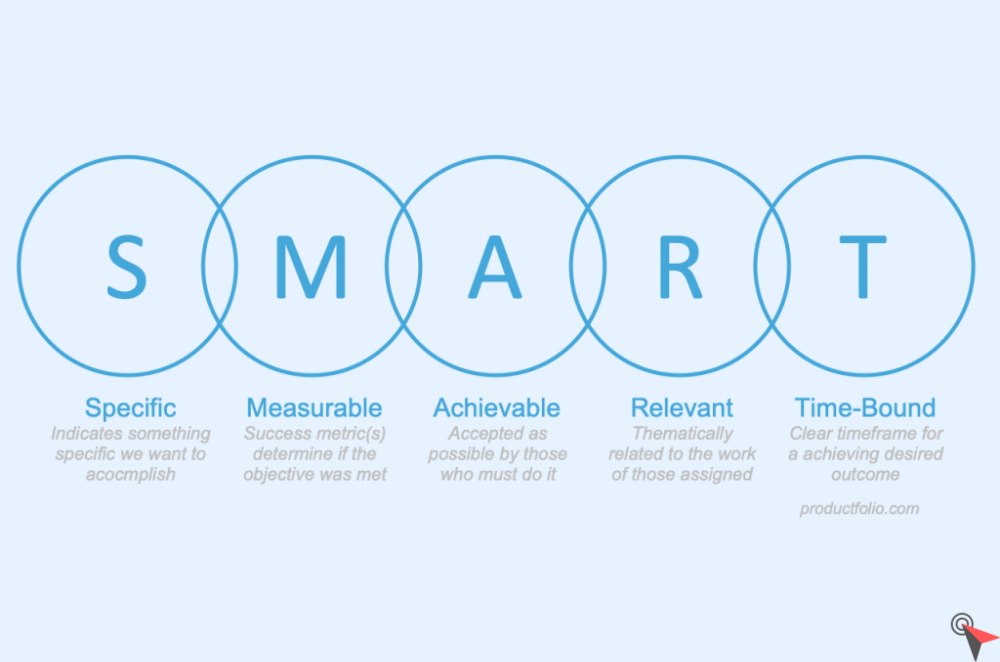SMART Goals and Objectives: Manage and Motivate the Sales Force
June 5, 2022


How to set SMART goals? First, there are basic principles for constructing motivating and involving indicators: clarity of the thresholds to be reached, the objectivity of the measurement, etc.
Having projects is one thing. Bringing them to fruition is another. This is why a certain number of tools exist to help leaders, managers, and salespeople to define and achieve their objectives. This methodological support allows them to carry out their projects. The SMART model is a management and project management methodology that works by goals.
“Smart” means “intelligent” in English; it is also an acronym whose each letter characterizes the main criteria of this practical method:
“S” stands for “Specific.”
“M” stands for “Measurable.”
“A” stand for “Achievable (realistic).”
“R” stands for “Relevant.”
“T” stands for “Time-Bound.”
This tool is handy for optimal communication of objectives and applies to the commercial function.
The condition of existence of any business (for profit) is to be profitable, to make a profit, and its project(s) must observe this imperative, taking into account the means and resources at its disposal.
Each project is divided into primary and secondary objectives, which must be determined precisely and communicated effectively. Rigor in the approach and collective mobilization (commitment) are decisive assets for a project to be crowned with success.
Therefore, a reflection must be carried out on the different objectives to be communicated to the sales representatives (personal and collective goals). Just as a building is not built in a day or one piece, but stone by stone, stone by stone, a business project can only be realized by clearly marking out the route leading to its success and sustainability. The acronym SMART indicates what is most important.
To help define the most appropriate targets, the framework offered by the SMART tool is relevant, and its implementation requires being very clear about the steps and results of an action plan. In this sense, SMART is a real help in developing business strategy. The usefulness of each indicator is based on the coherence of the project and results from the precision of the objective set. This method makes it possible to set milestones and measure performance.
To set up a good objective, work together as a group with the various stakeholders. Each objective must be well formulated and well understood by all.
This is why a bottom-up approach in dialogue with employees is to be preferred rather than a top-down approach solely between leaders and managers. The latter could lack a field approach. Objectives worked out with the employees and the sales representatives arouse their adhesion more easily and often gain in realism. Properly applied, the SMART grid, with its clear and precise objectives, mobilizes the troops. And if, in addition, the achievement of a goal triggers a reward, then the motivation to succeed is all the stronger!
Note: it is advisable to set intermediate objectives to keep employees involved over a long period.
A company designs and sells accounting software for SMEs. His experience of ten years in this market allows him to know that the best months are those of the start of the school year, in September and October. At the end of August, the management team brought together its sales representatives. Together, they agreed on the next objective and on the levers to be activated to achieve it.
“Over September and October, increase sales of the flagship software by 20% compared to last year over the same period.”
The objective is SMART because:
Salespeople will thus be able to mobilize the best levers: find new customers, develop current customers, etc., to achieve this concrete objective.
[Bad SMART objectives because they are too vague: “To offer the best accounting software on the market” or “to become a leader / to sell more than its competitors.” ]
A director of a translation franchise brings together his sales team in January to set annual objectives. Upstream, he studied the market in his sector, and he deduced that there was room for his brand in Île-de-France. He comes to define the following SMART objective:
“Open 5 new establishments in Île-de-France by the end of the year”.
Here again, each of the different SMART criteria is present, and it will be easy to check at the end of the year whether the objective has been – or not – been achieved.
